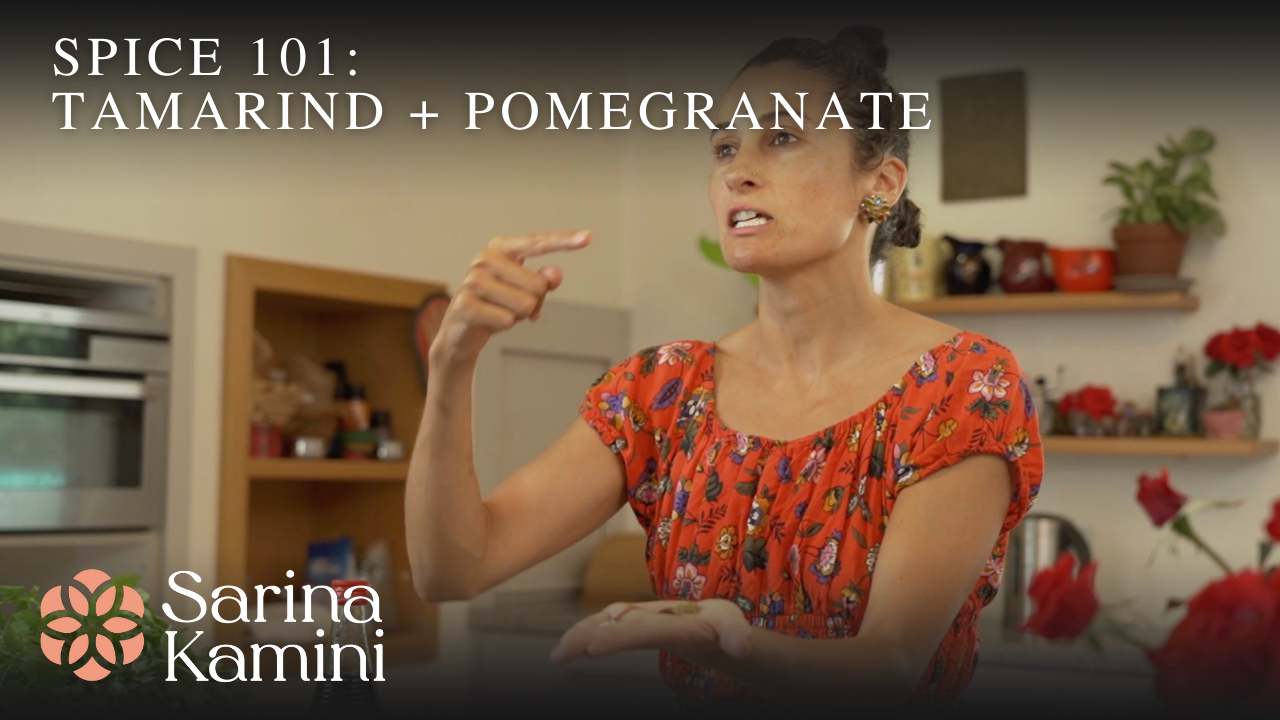TAMARIND AND POMEGRANATE
Breaking down the individual profiles of tamarind and pomegranate molasses is helpful in understanding how to use different acidic spices to facilitate different end tastes in a final dish. Acidity as a term gets thrown around a lot in cooking, but not all acids are the same: using lemon juice, for example, in a dense and complex Kashmiri masala will undo a lot of the character. But using a more textural and less slicing spice like tamarind pulp in a Kashmiri masala will bring tang and punch.
Learn a little bit more about tamarind and pomegranate molasses by reading some basics, and how to cook with these two acidic category spices, below.
TAMARIND + POMEGRANATE BASICS:
Both tamarind and pomegranate molasses are acidic category spices, which mean they add excitement to a dish, and slice through dark flavour profiles. Learn all about spice categories here.
Tamarind, like most aromatics, has multiple forms. The compressed fruit block is very textural. The texture softens its acidic impact. Using this style of tamarind in a dish will contribute tang. The tamarind concentrate is much “thinner” as an acid, which results in a more slicing and driving acidity. Experiment with both in this traditional Kashmiri Pandit tamarind and eggplant dish.
Pomegranate molasses is a bitter, acrid, tangy, and sweet concentrate of the pomegranate fruit that has a high, bright, slicing, and mouth puckering impact on a dish. Drizzle it across meats before roasting alongside salt, black pepper, cumin powder, and a little chilli powder. Use it as a dressing with olive oil, and a little sugar and salt on a roasted vegetable salad.
Ratios of use for both of these acidic aromatics is similar: as a concentrate, both tamarind and pomegranate molasses are strong and require as little as a teaspoon in a meal serving four to six people. Start slow, taste, and add more if necessary. Compressed tamarind can be used a little more liberally - four teaspoons of the paste in dishes feeding four to six people will contribute a definitive tang.
In terms of Ayurvedic contribution, acidic spices like tamarind and pomegranate molasses facilitate the pitta actions of the body - they are stimulating, heating, and exciting. In ageing bodies or bodies with inflammatory leanings, acidic spices should be used in moderate amounts alongside cooling aromatic and produce in order to minimise the impact on the system.

